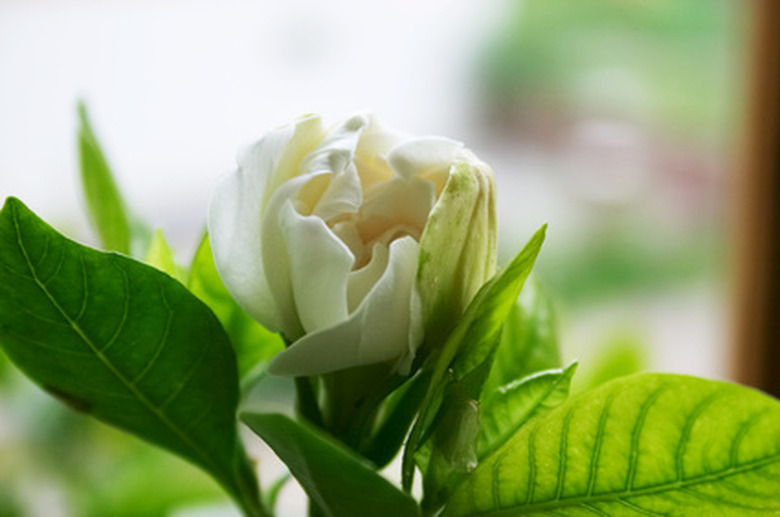How To Prevent Bud Drop In Gardenias
Things Needed
- Landscaping plant fertilizer
- Spray bottle
- Water
- Insecticide (if necessary)
In the world of gardenia lovers, few experiences cause more disappointment than discovering the plump, green buds dropping to the ground around your gardenia plant without blooming. Although it can be frustrating, you should take heart–experiencing bud drop is typically just an indication that you simply need to give your temperamental gardenias a bit more tender loving care. According to Kathleen Ruppert, assistant professor in the University of Florida's Environmental Horticulture Department, common causes of bud drop in gardenias include weather issues, root problems and damage from insects. To avoid this problem in the first place, develop the habit of checking your gardenia plants at least once every two to three days to assess their health.
Step 1
Apply organic soil amendments, such as compost, liberally to the surrounding soil during planting and once per month afterward to improve soil drainage and minimize possible nematode problems, which may lead to dropped buds. Avoid transplanting your gardenias when they're in bud to decrease plant stress.
Step 2
Apply a granular fertilizer rated for use with landscaping plants once per month from April through November to encourage overall health. Watch your gardenias' overall appearance. A healthy gardenia possesses vibrant, forest-green leaves and has a vigorous appearance.
- In the world of gardenia lovers, few experiences cause more disappointment than discovering the plump, green buds dropping to the ground around your gardenia plant without blooming.
- Avoid transplanting your gardenias when they're in bud to decrease plant stress.
Step 3
Monitor the humidity level in the air around your gardenias. Gardenias thrive in very humid weather conditions. If you're experiencing a drought or the air gets noticeably dry, spray a light mist of water in the air around your gardenias at least once daily to introduce more moisture to the air. Exercise care when you spray the water so you don't get the leaves wet; wet gardenia leaves may develop fungal spots, which can be difficult to get rid of.
Step 4
Water your gardenias regularly. Avoid providing excessive amounts of moisture in the soil, since that can cause bud drop, as well. As a general rule of thumb, moisten the soil thoroughly when you water your gardenia plants, but don't let the water pool around the base of the plants. Frequent, small waterings work well during hot weather to keep the soil from getting too dry.
- Monitor the humidity level in the air around your gardenias.
- As a general rule of thumb, moisten the soil thoroughly when you water your gardenia plants, but don't let the water pool around the base of the plants.
Step 5
Apply appropriate insecticides as soon as you see signs of insects to reduce the stress on your gardenias. Gardenias are prone to insect damage, which often leads to bud drop. Look especially for aphids, small, pear-shaped insects that tend to cluster on new green growth or on the bottoms of leaves.
Warning
Even if you provide regular preventative care, your gardenia could still experience bud drop as a result of uncontrollable factors, such as sudden temperature changes.
References
- University of Rhode Island Landscape Horticulture Program: Gardenia Care
- "Step-by-Step Yard Care;" Better Homes and Gardens; 2000
